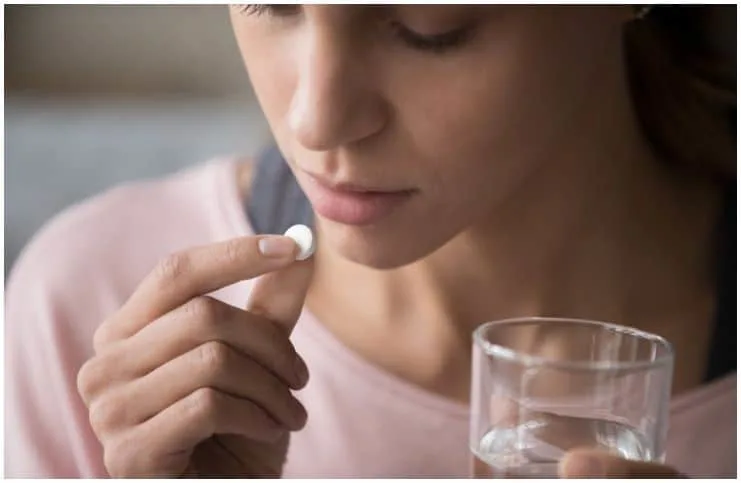Clindamycin and Alcohol Intake – Side Effects & Warnings:
Introduction
Clindamycin is a macrolide antibiotic that is derived from Streptomyces lincolnensis. It falls under the class of drugs called lincosamide antibiotics, named after the bacteria it was discovered from.
It does not have activity against the enterococci (ubiquitous gram-positive cocci). However, it has activity against microaerophilic streptococci, group A and B streptococci, and most Streptococcus pneumoniae.
This antibiotic is available as oral tablets, parenteral injection (this form is given only by a healthcare provider), and vaginal and topical formulations. Oral clindamycin can have more potent results, however, it is also more likely to cause negative side effects.
It was originally approved by the US Food and Drug Administration under the brand name Cleocin in 1970. For vaginal use, it is found under the brand name of Clindesse, a one-dose cream. It is also available as a generic drug.
Uses
This antibiotic is used as a treatment for serious bacterial infections, like – infections of the blood, MRSA (Methicillin-resistant Staphylococcus aureus), and infections of the uterus.
Topical application can be used to treat mild or moderate inflammatory or mixed acne.
Mechanism of Action
This drug exerts its antimicrobial effect by inhibiting bacterial protein synthesis.
Note – it shouldn’t be used for viruses, like the common cold. This drug should only be used to treat bacterial infections.
Side Effects
The most common adverse events include:
- backaches;
- joint pain;
- headaches;
- white patches in the mouth;
- heartburn;
- pain when swallowing.
Serious side effects include:
- facial swelling;
- blisters;
- unusual bleeding (of the mouth, vagina, nose, or rectum);
- rash;
- purple pinpoint spots under the skin;
- hives;
- easy bruising;
- sores in the mouth;
- chills;
- high temperature (fever);
- decreased urination;
- yellowing of the skin or eyes;
- difficulty swallowing or breathing.
Dosage
It can be taken:
- vaginally as a cream or suppository;
- topically on the skin as a gel, cream, or foam;
- by injection;
- by mouth as a liquid or as a capsule.
The usual recommended dose is 150 to 300 mg, taken every 6 hours. For severe bacterial infections, the usual recommended dose is 300 to 450 mg taken every 6 hours.
For children, the usual recommended dose is 3-6 mg per kg every 6 hours, depending on the severity.
Warnings & Precautions
Before you start using this antibiotic, it is important that your healthcare provider knows:
- if you have ever had an allergic reaction to this drug or any of its inactive ingredients;
- if you have porphyria, a rare metabolic disorder in which substances, called porphyrins, build up;
- if you have any bowel problems that cause you to have diarrhea;
- if you have a history of inflammation of the large intestine due to antibiotic treatment;
- if you have a history of inflammatory bowel disease, like – ulcerative colitis (a condition where the colon and rectum become inflamed) or Crohn’s disease.
This drug can kill the beneficial bacteria in the large intestine leading to the growth of Clostridium difficile bacteria. This bad bacterium can cause:
- mild abdominal tenderness and cramping;
- watery diarrhea 3 or more times per day for 2 or more days.
Prolonged administration of this antibiotic may result in superinfection due to a resistance to clindamycin.
Do not take this antibiotic if the packaging is torn or shows signs of tampering or after the expiry date printed on the pack.
Drug Interactions
It may interact in a negative way with the following medications:
- Sodium picosulfate (a contact stimulant laxative used as a treatment for constipation);
- Botulinum toxin A (a neurotoxic protein produced by the bacterium Clostridium botulinum);
- vecuronium (a medication used as part of general anesthesia);
- rocuronium (an aminosteroid non-
depolarizing neuromuscular blocker); - pancuronium (Pavulon);
- cisatracurium (Nimbex);
- atracurium (a medication used to provide skeletal muscle relaxation);
- Mycophenolate mofetil (Cellcept);
- norgestrel (a progestin medication that is used in birth control pills);
- norgestimate (a form of progesterone, that is used to prevent pregnancy);
- norelgestromin;
- mestranol;
- levonorgestrel;
- ethynodiol (sold under the brand names Femulen and Demulen);
- estradiol;
- drospirenone;
- dienogest;
- desogestrel.
ALSO READ: Hydroxycut vs Zantrex Black – Comparison
Is It Safe During Pregnancy or Breastfeeding?
There have been no adequate studies in pregnant women, hence, it is best to discuss with your healthcare provider if you are pregnant before using the antibiotic.
When taken orally, this lincosamide antibiotic is reported to have been secreted in the breast milk, therefore, if you are breastfeeding a baby, it is best to avoid this antibiotic.
ALSO READ: Anbesol vs Orajel
Clindamycin and Alcohol Intake
Alcohol and antibiotics shouldn’t be mixed for many reasons. Here are six reasons to avoid alcohol while taking clindamycin:
#1 Alcohol is processed in the body by liver enzymes, as are some antibiotic medications. When both alcohol and antibiotics are consumed over the same period, alcohol takes up enzyme capacity. This means that the antibiotic may not be broken down correctly.
Moreover, this leads to a decreased level of antibiotics in the bloodstream, and the bacterial infection may not be cured. The desired therapeutic effect may not occur with the recommended drug levels. Also, antibiotic resistance may occur.
#2 Drinking alcoholic beverages interferes with the essential processes of the body, like hydration and sleep, and these are vital components of recovering from a bacterial infection.
#3 Alcohol wreaks havoc on the immune system and response, and if you have a bacterial infection needing antibiotics, you should not be consuming alcoholic beverages for that reason.
#4 This antibiotic can intensify the effects of alcohol. Furthermore, it can increase the amount of alcohol that gets absorbed from the stomach.
#5 This drug may inflame the liver in a small percentage of patients treated. Consuming alcohol could further irritate the liver, which is already working hard to remove the extra alcohol.
#6 Alcohol can delay how quickly you recover from illness and reduce your energy levels. Therefore, it is suggested to avoid alcoholic drinks until you finish your antibiotics.
Other side effects of combining antibiotics with alcohol include:
- difficulty breathing;
- vomiting;
- chest pain;
- nausea;
- rapid heart rate;
- flushing of the skin;
- headache;
- vomiting;
- confusion;
- dizziness;
- sedation;
- drowsiness;
- stomach cramps.
Tip
It is best to wait at least 72 hours after finishing your course of antibiotics before having any alcoholic beverage.
Image source – Shutterstock
ALSO READ: Kyleena vs Skyla: Comparing IUDs
Sources https://www.ncbi.nlm.nih.gov/pmc/articles/PMC3250868/ https://www.nejm.org/doi/full/10.1056/NEJMoa1403789 https://link.springer.com/chapter/10.1007/978-0-387-49785-3_38

